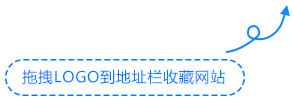免费资源下载

Vue3动态组件革命:构建智能自适应布局系统
一、架构设计
基于动态组件工厂的响应式布局引擎,根据设备能力和内容特征自动选择最优组件,布局切换零延迟
二、核心实现
1. 组件动态注册器
// components/ComponentFactory.js
import { shallowRef, defineAsyncComponent } from 'vue'
const componentRegistry = new Map()
const activeComponents = shallowRef(new Set())
export function registerComponent(name, loader) {
componentRegistry.set(name, {
loader: () => loader(),
instances: 0
})
}
export function useComponent(name) {
if (!componentRegistry.has(name)) {
throw new Error(`Component ${name} not registered`)
}
const component = componentRegistry.get(name)
component.instances++
activeComponents.value.add(name)
return defineAsyncComponent(component.loader)
}
export function unregisterComponent(name) {
if (componentRegistry.has(name)) {
componentRegistry.delete(name)
activeComponents.value.delete(name)
}
}2. 自适应布局策略
// layouts/AdaptiveStrategy.js
import { ref, watchEffect } from 'vue'
export function useLayoutStrategy() {
const currentLayout = ref('desktop')
const componentVariants = ref({})
function detectLayout() {
const width = window.innerWidth
if (width < 768) return 'mobile'
if (width {
currentLayout.value = detectLayout()
componentVariants.value = {}
})
return {
currentLayout,
getComponentVariant: (baseName) => {
if (!componentVariants.value[baseName]) {
componentVariants.value[baseName] = selectComponentVariant(baseName)
}
return componentVariants.value[baseName]
}
}
}三、高级特性
1. 组件按需加载
// utils/LazyLoader.js
export function createLazyLoader() {
const loadedComponents = new Set()
return {
load: async (name) => {
if (loadedComponents.has(name)) return
try {
const module = await import(`../components/${name}.vue`)
registerComponent(name, () => module.default)
loadedComponents.add(name)
} catch (e) {
console.error(`Failed to load component ${name}:`, e)
}
},
preload: (names) => {
names.forEach(name => this.load(name))
}
}
}2. 布局切换动画
// transitions/LayoutTransition.js
import { h, Transition } from 'vue'
export const LayoutTransition = {
name: 'LayoutTransition',
setup(_, { slots }) {
return () => h(Transition, {
name: 'layout',
mode: 'out-in',
onBeforeEnter(el) {
el.style.opacity = 0
el.style.transform = 'translateY(20px)'
},
onEnter(el, done) {
const animation = el.animate([
{ opacity: 0, transform: 'translateY(20px)' },
{ opacity: 1, transform: 'translateY(0)' }
], { duration: 300 })
animation.finished.then(done)
},
onLeave(el, done) {
const animation = el.animate([
{ opacity: 1, transform: 'translateY(0)' },
{ opacity: 0, transform: 'translateY(-20px)' }
], { duration: 200 })
animation.finished.then(done)
}
}, slots)
}
}四、完整案例
<script setup>
import { useComponent } from './components/ComponentFactory'
import { useLayoutStrategy } from './layouts/AdaptiveStrategy'
import LayoutTransition from './transitions/LayoutTransition'
const { currentLayout, getComponentVariant } = useLayoutStrategy()
// 动态获取组件
const componentName = computed(() => getComponentVariant('ProductCard'))
const DynamicComponent = useComponent(componentName)
</script>
<template>
<LayoutTransition>
<component
:is="DynamicComponent"
:key="currentLayout"
v-bind="$attrs"
/>
</LayoutTransition>
</template>




